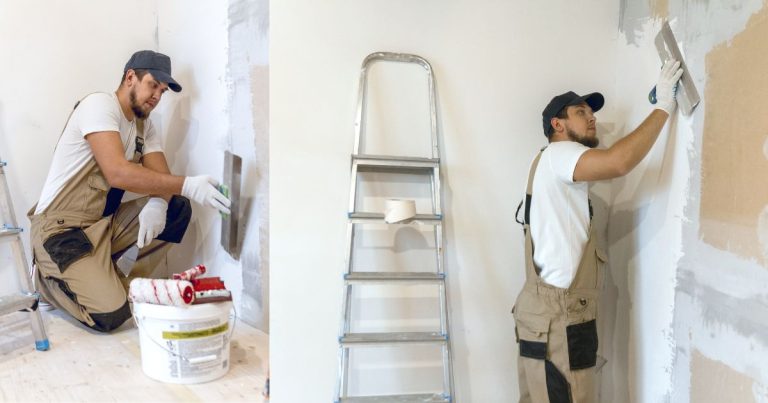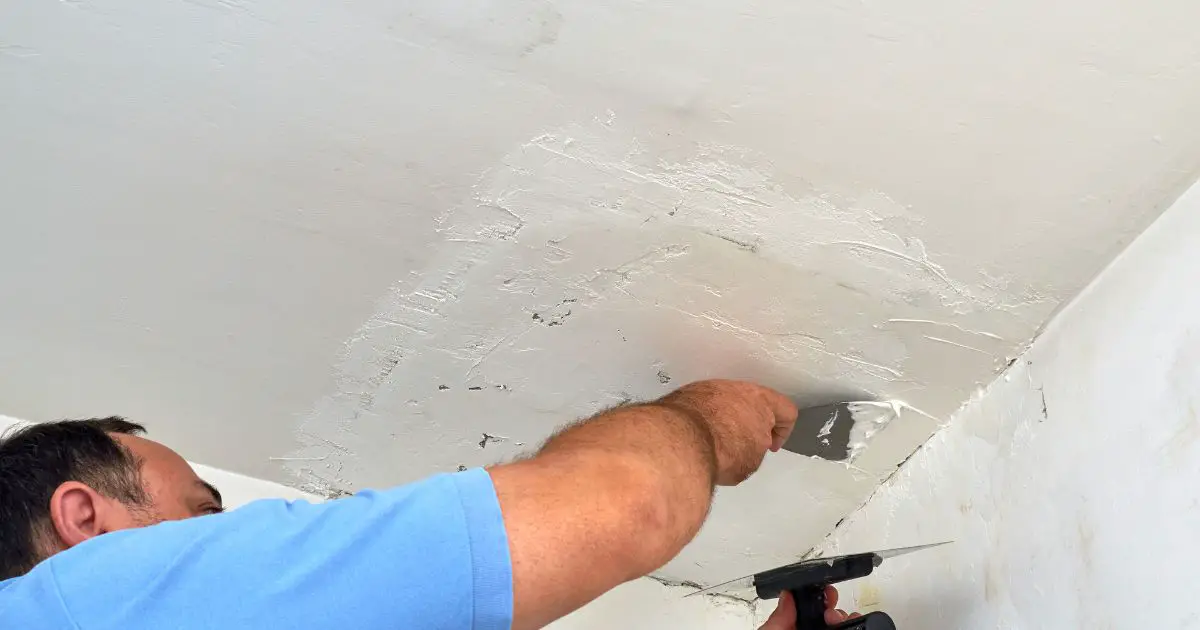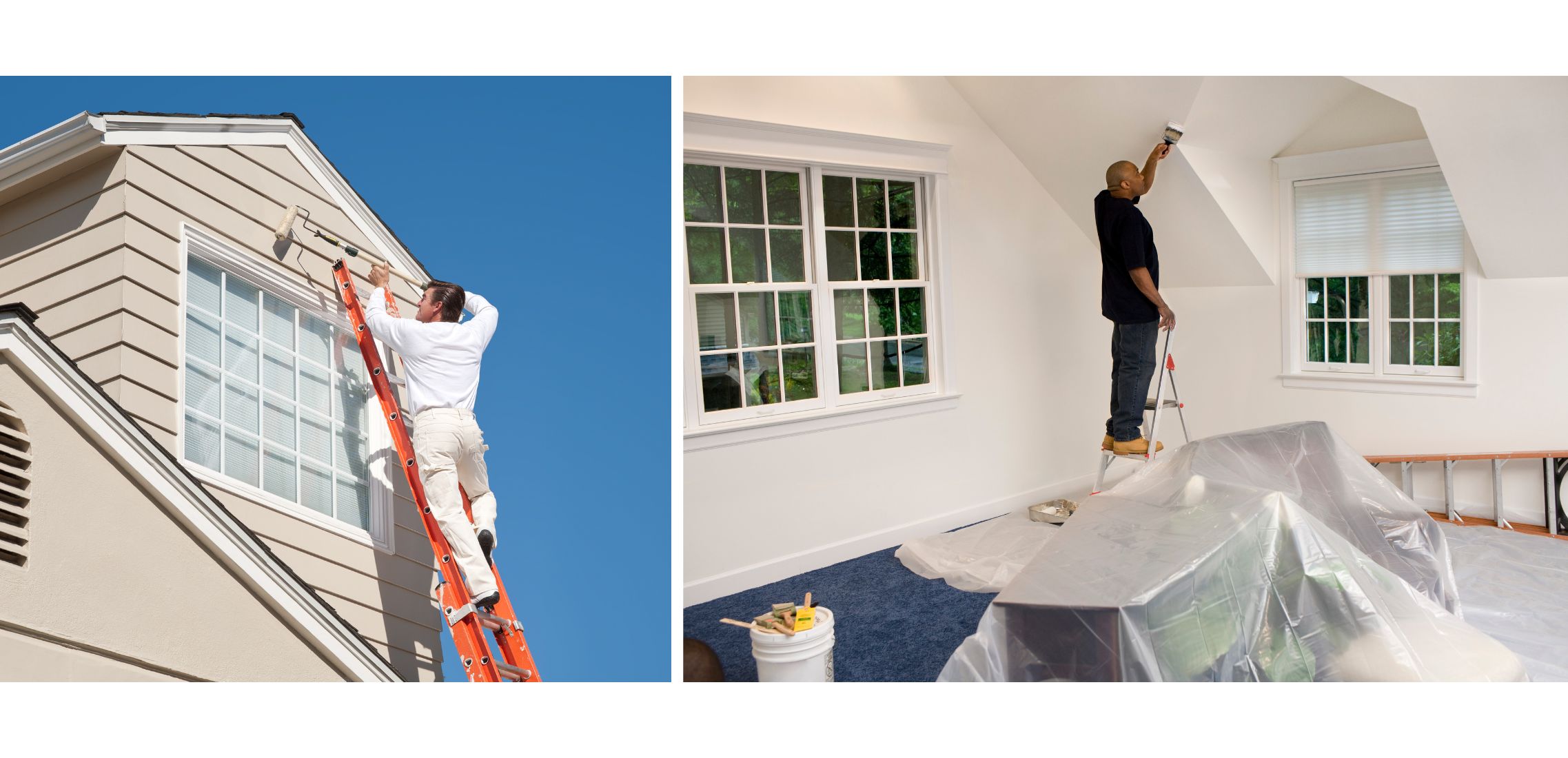When it comes to repairing holes in walls, many people are unsure of which product to use: painter’s putty or spackle. Both products are designed to fill holes and cracks, but they have different properties that make them better suited for different tasks. Here is a brief overview of each product to help you decide which one is right for your repair job.
Painters putty is a pliable, oil-based material that is easy to spread and smooth. It dries slowly, so you have plenty of time to work with it before it sets. Once it dries, it is very strong and can be sanded or painted over.
Because it is oil-based, painter’s putty is not recommended for use on plastered walls. Spackle is a lightweight, water-based product that dries quickly. It is easy to spread and can be sanded or painted once it dries.
Because it is water-based, spackle is ideal for use on plastered walls. However, it is not as strong as painter’s putty and may not be suitable for large holes or cracks.
Painters Putty Vs Spackle
When it comes to painting, there are a few different materials that can be used to fill in cracks and holes. Two of the most popular options are painters putty and spackle. But which one is the best to use?
Painters putty is a pliable, putty-like material that is used to fill in small cracks and holes. It is easy to apply and can be sanded down once it has dried. Spackle is a similar material, but it is usually used for larger cracks and holes.
It is also easy to apply and can be sanded down, but it may take longer to dry. So, which one should you use? If you have small cracks and holes, then painter’s putty is a good option.
If you have larger cracks and holes, then spackle is a better choice.
Best painters putty
If you’re looking for the best painter’s putty for your next project, you’ve come to the right place. In this blog post, we’ll provide detailed information about the best painters’ putty on the market, as well as tips on how to choose the right putty for your needs. A painter’s putty is an essential part of any painting project, and it’s important to choose a putty that will best suit your needs.
There are many different types of painters putty on the market, so it’s important to do your research before making a purchase. When choosing a painter’s putty, it’s important to consider the type of surface you’ll be using it on. Some putties are better suited for smooth surfaces, while others are better for rough surfaces.
It’s also important to consider the type of paint you’ll be using, as some putties are not compatible with certain types of paint. Once you’ve considered all of these factors, you’ll be able to narrow down your choices and find the best painter’s putty for your project. If you have any questions, feel free to reach out to our team of experts for help.
Painters putty vs wood filler
There are a lot of different fillers on the market these days. So, what’s the difference between painters’ putty and wood filler? Painters putty is a smooth, pliable filling compound used for filling holes, dents, and scratches in wood surfaces.
It can be sanded and painted once it’s dry. Wood filler, on the other hand, is a thicker, grainier compound used for filling larger holes and cracks in wood surfaces. It can also be sanded and painted once it’s dry.
So, which one should you use? It really depends on the size and depth of the hole or cracks you’re trying to fill. For small holes and scratches, painter’s putty is a good option.
For larger holes and cracks, wood filler is a better choice.
How to use painters putty
If you’re going to be doing any painting, you’ll need to know how to use painter’s putty. This substance is used to fill holes and cracks in surfaces before painting them. It’s important to know how to use painter’s putty properly so that your paint job will look its best.
Here are the basics of how to use painters putty:
- Start by cleaning the surface on which you’ll be applying the putty. Make sure there is no dust or debris on the surface, as this will make it harder for the putty to adhere.
- Once the surface is clean, apply a layer of putty to the area you’re working on. You can use a putty knife or your fingers to apply the putty.
- Make sure that the putty is smooth and even. If there are any lumps or bumps, they’ll show through once you paint over them.
- Allow the putty to dry completely before painting. Depending on the type of putty you’re using, this can take anywhere from a few hours to a few days.
- Once the putty is dry, you’re ready to paint! Be sure to use paint that is compatible with the type of putty you used. Painters’ putty is a great way to create a smooth, even surface for painting.
Painters putty 53
If you’re a painter, chances are you’ve used painter’s putty at some point in your career. But what exactly is painter’s putty, and what does it do? Painters putty is a type of filler that is used to fill in cracks, holes, and other imperfections in surfaces before painting.
It is usually made from a combination of linseed oil, whiting, and clay, and it dries to a hard, smooth finish that can be sanded and painted over. Painters’ putty is an essential part of the painting process, and it can be used on a variety of surfaces, including wood, plaster, and drywall. It’s important to choose the right type of putty for the surface you’re working on and to follow the manufacturer’s instructions for application and drying times.
If you’re looking for a reliable painter’s putty that will give you a smooth, professional finish, 53 is a great option.
Can you sand painters putty
Painter’s putty is a type of pliable filler that is often used to repair holes or cracks in wood surfaces. While painter’s putty can be sanded down, it is not always necessary to do so. In fact, sanding a painter’s putty can sometimes create more dust and debris than is necessary.
If you do decide to sand painter’s putty, be sure to use fine-grit sandpaper so as not to damage the wood surface.
Is spackle the same as painters putty?
No, spackle and painter’s putty are not the same. Spackle is a type of joint compound used for filling and repairing holes in walls, while painter’s putty is a type of sealant used for filling cracks and gaps in woodwork.
What is painter’s putty used for?
Painter’s putty is a type of sealant that is most commonly used to fill in small holes or cracks in wood surfaces. It can also be used to smooth out uneven surfaces and to create a smooth transition between two different materials. Painter’s putty is typically made from a combination of linseed oil and whiting, and it can be tinted to match the surrounding area.
How long does it take for painter’s putty to dry?
Painter’s putty is a type of sealant used to fill in small cracks and holes in wood surfaces. It is typically made from a mixture of linseed oil, whiting, and clay. Once applied, it takes approximately 24 hours for the putty to dry completely.
Is putty the same as drywall compound?
No, putty and drywall compounds are not the same. Putty is a pliable, moldable material used to fill holes and cracks in wood surfaces. A drywall compound is a thick, viscous material used to fill joints between pieces of drywall.
Conclusion
When it comes to repairing small holes in walls, many people are unsure of which type of product to use: painter’s putty or spackle. Both products are designed for this purpose, but there are some key differences between them. Painters putty is a thicker, more malleable substance that is ideal for repairing larger holes.
It can be spread easily and evenly over the hole and then sanded down once it has dried. Spackle, on the other hand, is a thinner product that is better suited for smaller holes. It dries quickly and hardens to a smooth finish, making it ideal for repairing surface imperfections.
So, which should you use? It really depends on the size of the hole and your personal preference. If you’re not sure, it’s always best to consult with a professional before beginning any repair project.










